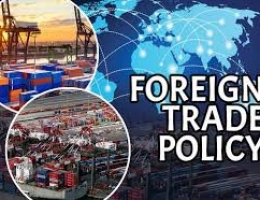
Opening Doors to Europe: How the India–EFTA Trade Pact Can Transform MSMEs
India has taken a major step to expand its trade footprint in Europe with the India–EFTA Trade and Economic Partnership Agreement (TEPA), which came into force on October 1, 2025. This landmark pact with the European Free Trade Association (EFTA), comprising Switzerland, Norway, Iceland, and Liechtenstein, marks India’s first comprehensive trade agreement with a European bloc. It opens new opportunities for Indian exporters, especially MSMEs, promising tariff cuts, broader market access, and long-term investments worth $100 billion, alongside the potential creation of one million jobs in India.
Before this pact, Indian MSMEs faced high tariffs, strict quality standards, and limited access to EFTA markets. Many exporters struggled with competitiveness due to high costs and procedural hurdles. Under the new deal, EFTA countries will remove or reduce tariffs on 92% of Indian exports, while India will offer concessions on 82% of EFTA imports. Sensitive sectors such as dairy, coal, and soya are excluded to protect domestic producers. The agreement also includes provisions on services, investments, sustainability, and dispute resolution.
A defining feature of the pact is EFTA’s commitment to invest $100 billion in India over 15 years, strengthening manufacturing, infrastructure, and innovation. For MSMEs, this means potential access to advanced technologies, supply chain improvements, and easier financing. Sectors such as textiles, leather goods, processed food, engineering components, and pharmaceuticals are positioned to benefit most. Reduced tariffs will make Indian goods more competitive in high-value European markets, while investment flows may improve infrastructure and manufacturing capacities.
The agreement also offers Indian entrepreneurs the chance to diversify beyond markets like the U.S., where recent tariff changes have caused disruptions. EFTA markets value sustainability, quality, and ethical sourcing, which aligns well with the growing strengths of Indian MSMEs. Supportive measures, such as the extension of the RoDTEP export incentive scheme until March 2026 and easier compliance procedures by the Reserve Bank of India, make the timing ideal for MSMEs to explore these opportunities.
Next Steps for Indian Entrepreneurs
To leverage the EFTA trade pact, MSMEs should take proactive steps by first researching the market to understand demand patterns, competition, and opportunities in EFTA countries.
- They should meet compliance standards by learning about rules of origin, product certification, environmental standards, and labelling requirements.
- Entrepreneurs should also use government incentives such as the RoDTEP scheme and other export support programs to improve competitiveness.
- Building partnerships by attending trade fairs, connecting with European buyers, and leveraging Indian trade offices abroad can open doors to new opportunities.
- Upgrading quality and branding through better product quality, packaging, sustainability credentials, and brand positioning is essential to succeed in European markets.
- MSMEs should start small with pilot shipments to test markets before scaling up and stay updated on policy changes and trade developments through the DGFT portal and relevant industry networks.
The India-EFTA trade pact is a landmark opportunity for Indian MSMEs to access high-value European markets, attract investment, and strengthen global competitiveness. Success will depend on the entrepreneur's ability to adapt to quality and compliance requirements, upgrade operations, and strategically use government support. MSMEs that prepare well can transform this policy change into a growth milestone, positioning themselves for a sustainable presence in one of the world’s most lucrative markets.











